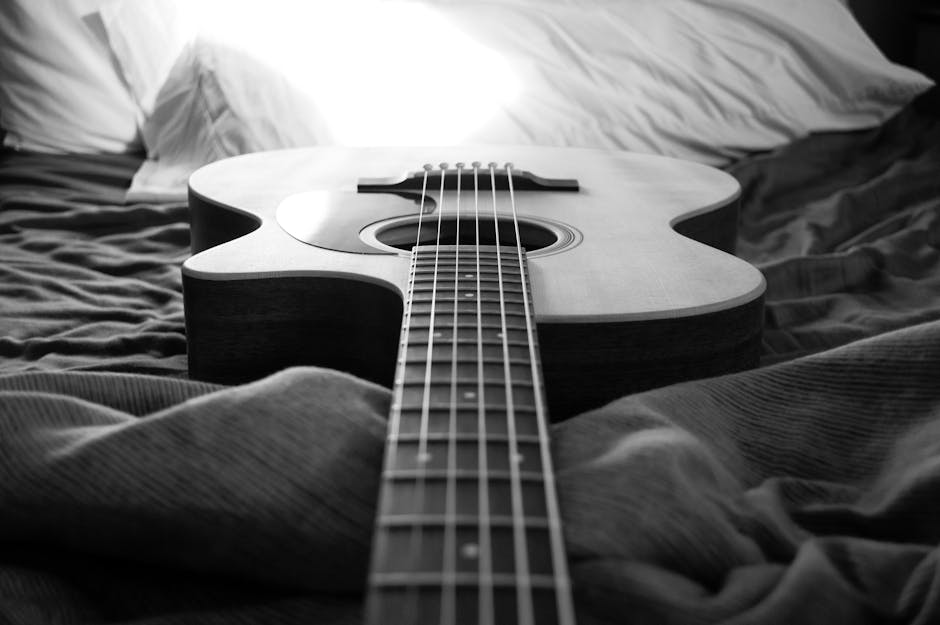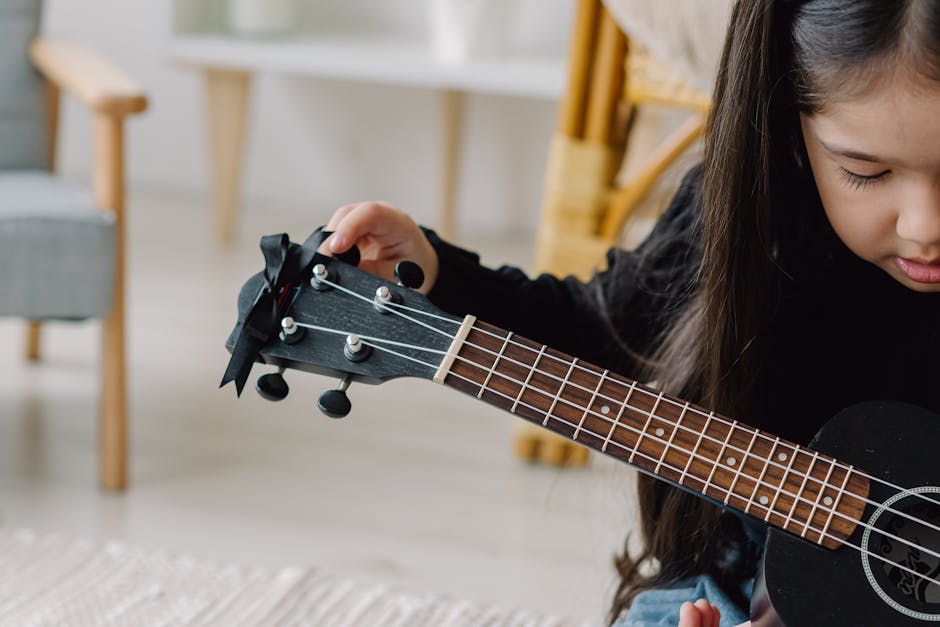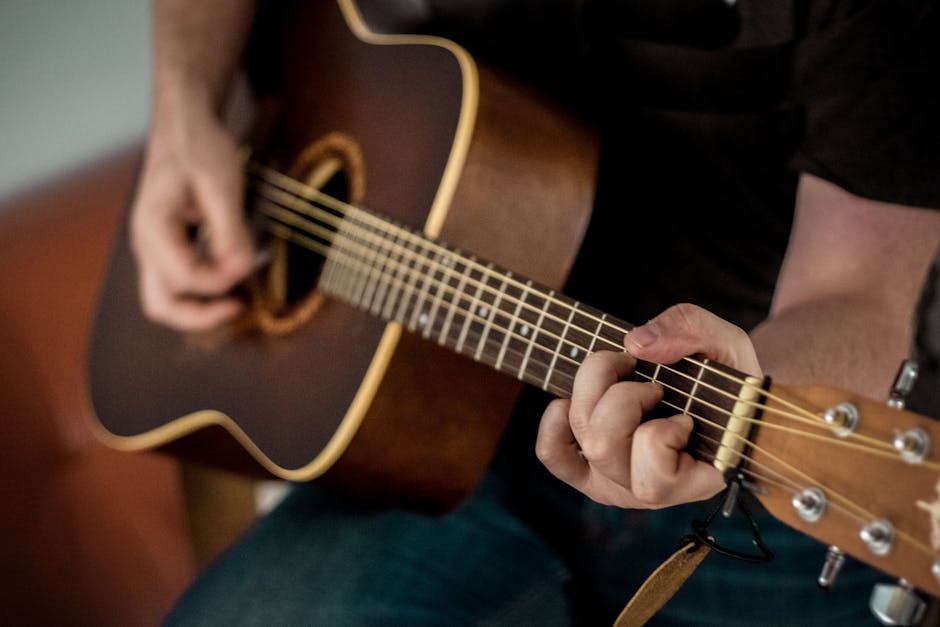Welcome to the wonderful world of guitar music! As a beginner, the thought of deciphering those mysterious squiggly lines and dots on a music sheet may seem as daunting as trying to unravel the secret behind the Bermuda Triangle. But fret not (pun intended), my fellow aspiring rockstars! With a little bit of patience and a lot of practice, you’ll be reading guitar music like a pro in no time. So grab your guitar, dust off your music stand, and get ready to master the basics of reading guitar music with a dash of humor and a whole lot of fun!
Contents
- 1 Understanding Standard Musical Notation and Tablature
- 2 Deciphering Strings and Frets on Your Guitar
- 3 Learning to Read Rhythms in Guitar Music
- 4 Familiarizing Yourself with Common Guitar Chords
- 5 Incorporating Techniques and Articulations in Guitar Playing
- 6 Practicing Sight Reading to Improve Fluency
- 7 FAQs
- 8 Rock on, Beginner Guitarists!
Understanding Standard Musical Notation and Tablature
So, you want to learn how to read music? Well, hold onto your hat because we’re diving into the wild world of standard musical notation and tablature!
First off, let’s talk about standard musical notation. This is the fancy schmancy way musicians write down notes on paper so you can play them on your instrument. It’s like learning a whole new language, but instead of words, you’ve got notes, rests, and all sorts of symbols to wrap your brain around.
Now, onto tablature, aka “tabs” for all you cool cats out there. Tabs are like the cheat codes of music notation. They show you exactly where to put your fingers on your instrument to play a specific note. No need to decipher fancy symbols or squiggly lines – just follow the numbers on the strings and you’re good to go!
So, whether you’re more of a classical sheet music type or a rockin’ tab aficionado, understanding both standard musical notation and tablature opens up a whole new world of musical possibilities. So grab your instrument, a cup of coffee (or something stronger), and let’s dive into the magical realm of music notation!
 Strings and Frets on Your Guitar”>
Strings and Frets on Your Guitar”>
Deciphering Strings and Frets on Your Guitar
So, you’ve picked up a guitar and you’re ready to start jamming. But wait – what do all those numbers and lines on the neck of the guitar mean? Fear not, dear aspiring rock star, for we are here to help you decipher the strings and frets on your guitar like a pro!
Let’s start with the strings. From top to bottom (or bottom to top, depending on which way you hold your guitar), the strings are typically labeled E, A, D, G, B, E. You can remember this by using the mnemonic “Every Acid Dealer Gets Busted Eventually” - just kidding, don’t do drugs, kids.
Now onto the frets. Frets are the little metal bars that run across the neck of your guitar. Each fret represents a different note, and as you move your fingers up and down the neck, you can create different pitches and chords. Just remember, the higher the fret number, the higher the pitch. **Mind blown**
And finally, don’t forget about the magical world of barre chords. These bad boys involve using one finger to cover multiple strings at once, allowing you to play a whole bunch of different chords with just one shape. **It’s like guitar cheat codes!** So, grab your axe, start shredding, and remember – practice makes perfect… or at least slightly less terrible.

Learning to Read Rhythms in Guitar Music
So you’ve decided to tackle the beast known as rhythm in guitar music. Congratulations! You’re about to enter a world of confusion, frustration, and the occasional victory dance when you finally nail that tricky passage.
First things first, grab your guitar, take a deep breath, and let’s dive into the world of rhythms. Here are some tips to help you along the way:
- Clap it out: Before even picking up your guitar, try clapping along to the rhythm of the piece. This will help you internalize the beat and get a feel for the timing.
- Break it down: Don’t try to tackle the entire piece at once. Break it down into smaller sections and practice each part separately before putting it all together.
- Count it out: It may feel silly at first, but counting out loud (or in your head) can really help you stay on track with the rhythm. Trust me, your future self will thank you.
Remember, is a journey, not a sprint. Take your time, be patient with yourself, and don’t be afraid to ask for help when you need it. And most importantly, don’t forget to have fun along the way!

Familiarizing Yourself with Common Guitar Chords
So you’ve decided to pick up the guitar and dive into the world of music. Congratulations! One of the first things you’ll need to do is familiarize yourself with some common guitar chords. Don’t worry, it’s not as daunting as it may seem!
One of the most basic chords to learn is the C major chord. This one is like the vanilla ice cream of guitar chords – simple, classic, and goes with just about everything. Another essential chord is the G major chord. Think of this one as the cool kid at the guitar party – it’s versatile, fun, and a staple in many songs.
Now, let’s talk about the D major chord. This one is like the reliable friend that always has your back. It’s easy to play and sounds great in a variety of songs. Lastly, don’t forget about the A minor chord. This chord is like the little brother of the guitar world – often overlooked, but packs a punch when used correctly.
As you practice and get more comfortable with these common guitar chords, you’ll start to see how they fit together like puzzle pieces to create beautiful music. So grab your guitar, strum away, and let the chords take you on a musical journey!

Incorporating Techniques and Articulations in Guitar Playing
So you’ve mastered the basic chords and scales on your guitar, but now you’re looking to take your playing to the next level. Incorporating techniques and articulations into your playing is a great way to add flair and personality to your music. Here are some fun ways to spice up your guitar playing:
- Hammer-ons and pull-offs: Instead of just playing each note individually, try hammering on a note with your fretting hand to create a smooth, connected sound. Pull-offs are the opposite – you pluck a note with your picking hand and then quickly pull off to a lower note with your fretting hand.
- Bends and vibrato: Give your notes some character by bending the strings up or down to change the pitch. Vibrato adds a nice touch of expression by subtly wobbling the pitch of the note.
- Slides and trills: Sliding from one note to another can create a cool sliding effect, while trills involve rapidly alternating between two notes to add some quick movement to your playing.
Experiment with these techniques and see how they can bring your guitar playing to life. Don’t be afraid to get creative and try new things – after all, music is all about expressing yourself and having fun!
Practicing Sight Reading to Improve Fluency
So you’ve decided to tackle sight reading to improve your fluency. Congratulations! You’re about to dive into the wild world of musical notation and try to make sense of those mysterious squiggly lines on the page. But fear not, with a little practice and a lot of patience, you’ll soon be sight reading like a pro.
Here are a few tips to help you on your sight reading journey:
- Start Slow: Don’t try to jump into Beethoven’s Symphony No. 5 on your first day. Start with simple exercises and gradually work your way up to more complex pieces.
- Consistency is Key: Make sight reading a regular part of your practice routine. The more you do it, the easier it will become.
- Use a Metronome: Keeping a steady tempo is crucial when sight reading. A metronome will help you stay on track and develop a strong sense of rhythm.
Remember, sight reading is like a musical puzzle. It may seem daunting at first, but with practice, you’ll start to see patterns and recognize common intervals and chord progressions. So grab your sheet music, sharpen your pencil, and get ready to improve your fluency one note at a time!
FAQs
What are the basic elements of guitar music notation?
Think of it as decoding a secret message – you’ve got your staff (those five horizontal lines), notes (the little circles that tell you what to play), and various symbols like clefs, key signatures, and time signatures that give you all the clues you need to rock out.
Why is it important to learn how to read guitar music?
Well, unless you want to spend your days playing the same three chords over and over again, learning how to read guitar music opens up a whole new world of possibilities. From playing complex solos to jamming with other musicians, the ability to read music is like having a treasure map to guitar greatness.
What are some tips for beginners struggling to read guitar music?
Take it slow – Rome wasn’t built in a day, and neither will your guitar skills. Practice consistently, use mnemonic devices to remember the notes, and don’t be afraid to ask for help. And remember, even the greatest guitarists started out as clueless beginners – so keep at it!
How can I improve my sight-reading skills?
Practice, practice, practice! The more you expose yourself to different pieces of music, the better you’ll get at sight-reading. Start with simple songs and gradually work your way up to more challenging pieces. And don’t be too hard on yourself – even the pros mess up every now and then.
Rock on, Beginner Guitarists!
Congratulations on taking the first step towards mastering the basics of reading guitar music! Remember, even the greatest rockstars started out as beginners just like you. Keep practicing, stay patient, and soon enough you’ll be shredding like a pro. So grab your guitar, rock out to some tunes, and get ready to show off your newfound skills to the world. You got this!



